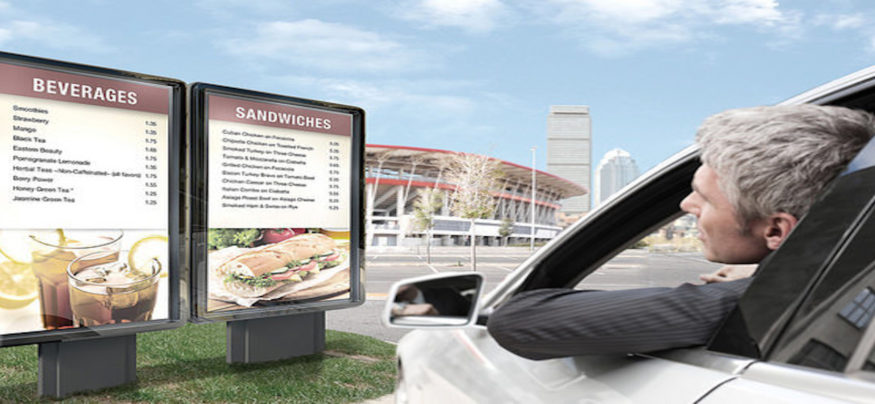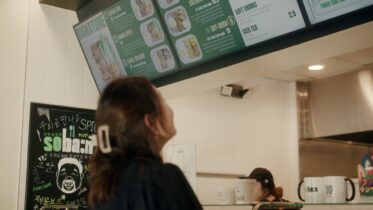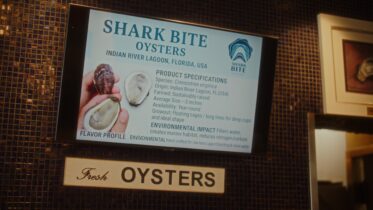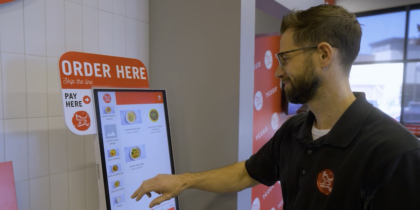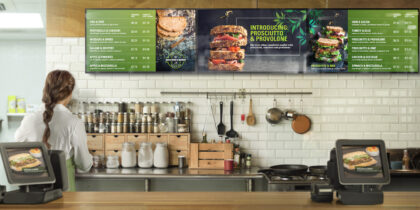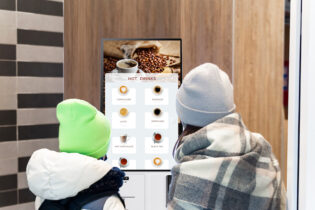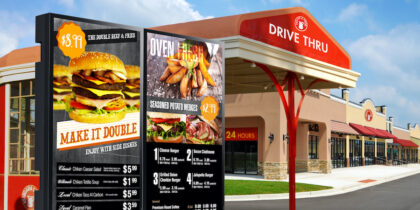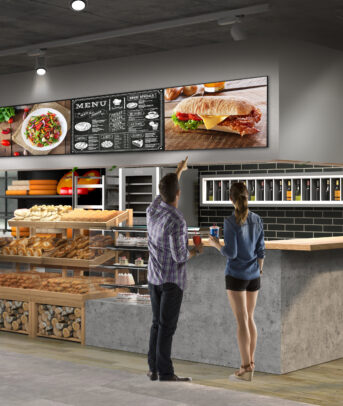Putting the quick in Quick Service Restaurants, or QSRs, has owed a lot to the sensors and systems that are now the basis of what’s being called the Internet of Things.
To get an order to a customer, without customer lines backing up, takes automation and smart devices that are driving near factory-level precision at the food prep stations. That involves everything from GPS-driven systems that say where food delivery trucks are, to sensors that tells staffers a vehicle has pulled up to a drive-thru order position.
It’s an information-driven environment, for customers and particularly on the other side of the order counter.
Walking into a QSR these days often means seeing a bank of digital displays over the order stations, as LCD panels have been rapidly replacing static backlit menu posters. Going digital has enabled operators to switch out menu items and change pricing in a matter of minutes, instead of what could be weeks between graphic design time, pre-press approvals, printing, and shipping.
It’s also enabled different menus by a time of day – “disappearing” the breakfast menu at 11 a.m. each day, for example. Digital has added the ability, as well, to put promotions in motion that catch guests’ eyes and drive sales.
The more technology sophisticated QSR chains – large and small – are starting to leverage the data and triggers generated by smart Internet of Things devices and systems to directly impact what’s on menu screens.
Some QSRs are testing apps and transaction platforms that will enable consumers to order and pay for lunch before they walk in the restaurant door – a digital display at the counter greeting them as they walk in, telling them where to pick up their meal.
Others are tying into back-office restaurant management systems to shape content based on everything from historical selling patterns – order tendencies by time and day or week – or variables like the weather. Retailing giants like Walmart already data mine weather forecasts to shape in-store promotions, knowing sales of certain items climb based on things like warm weather or rain.
All that food, all that kitchen bustle in QSRs, puts a lot of dust and tiny debris into the air, particularly at the order counter and in the kitchen. Those particles clog and jam up anything with moving parts and fans, which is why Samsung’s Smart Signage Platform displays have found their way into many QSR and concession environments, like the StubHub Center in suburban Los Angeles.
More conventional menu board systems have separate PC-based media players driving a video signal to displays while Samsung’s commercial-grade Smart Signage displays include the media player and connectivity inside the display. That removes a frequent point of failure – a clogged-up PC – and also tidies installations because the only cable needed with Smart Signage is for power.
Screens are also being used “front of house” for item promotions, branding, and community service messages – replacing posters on walls. Some restaurants use screens in dining areas to entertain guests with custom programming, sometimes supported by advertising. Samsung also provides high-brightness screens capable of operating in sunlight as pre-sell screens in drive-thrus and sidewalk windows.
Behind the scenes, the Internet of Things heavily informs and shapes food preparation, and overall restaurant operations. Cooks are responding, for example, to real-time display monitors dynamically showing orders coming from the counter, as well as new types of orders that are starting to emerge not only from app-driven smartphone ordering, but also in-store via touchscreen kiosks.
Inventory is increasingly being forecasted, ordered and adjusted based on historical data and on-premise systems that monitor what’s on hand. The larger, more sophisticated QSRs will be moving to automated inventory racks that have IoT sensors and can trigger orders before a manager ever notices some item is running down in counts, or show levels – using HTML5-driven charts – on screens outside cold storage.
IoT is also having a direct hand in a QSR’s business intelligence.
At the National Retail Federation’s annual show, Samsung partnered with French video analytics firm Quividi on an intelligent digital storefront solution that combined high brightness smart signage displays with face pattern detection technology. The solution anonymously counts how many people see the screen, how long they look and dwell, and how viewers break down by estimated gender and age distributions. The real-time analysis gives restaurant operators a much richer sense of their customer base and helps them understand the efficacy of digital screen marketing efforts, allowing them to quickly tune and optimize.
Similar image sensing technology is also being used by some QSRs to analyze vehicle traffic and determine where to locate a new restaurant. By analyzing everything from license plates to how many people are in cars, trucks and SUVs, the technology helps operators make decisions on the potential for sites, or for existing locations, providing demographic analyses of where people are coming from and insights on how promotions like direct mail to targeted communities may be working.
With QSRs already heavily using smart devices and systems, it’s likely we’ve only seen the start of where the Internet of Things will go in QSR. Certainly, customers are expecting more technology.
The National Restaurant Association’s 2015 Industry Forecast suggests 41 percent of the critical 18 to 34-year-old demographic says technology is an important factor when they choose a restaurant, and the next age bracket – 35 to 44 years – wasn’t far behind at 39 percent. Technology, the NRA’s research found, improves speed and convenience for consumers.
IoT devices, big data, ubiquitous connectivity and smart displays are combining to evolve and redefine the QSR experience. The intriguing thing is that what we’ve seen so far probably reflects just a fraction of the possibilities.
Want to learn more about the IoE and Smart Digital Signage? Read the whitepaper or attend the opening keynote panel at Infocomm 2015, where Samsung Business is the presenting partner.
